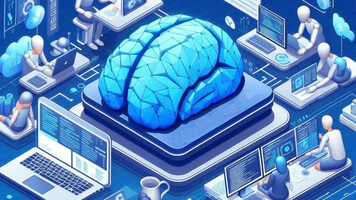
- By Justin Riddiough
- December 8, 2023
Unique Concerns in Neuromorphic Computing
Neuromorphic computing introduces a set of concerns that are distinct from traditional computing paradigms.
Addressing these unique concerns is crucial for the responsible development and deployment of neuromorphic systems.
Exploring Unique Concerns
Unique concerns in neuromorphic computing include:
-
Neural Network Complexity: The intricate nature of neural networks in neuromorphic systems introduces challenges in understanding and managing their complexity. Developing strategies to enhance comprehension and control is essential.
-
Real-time Learning Implications: The capability of neuromorphic systems to learn in real-time raises concerns about the adaptability of models and the potential impact on decision-making. Ethical guidelines must address the implications of continuous learning.
-
Neuroethics and Consciousness: As neuromorphic systems simulate aspects of neural processes, questions arise regarding neuroethics and the potential emergence of consciousness-like attributes. Ethical considerations should encompass the philosophical implications of artificial intelligence resembling cognitive processes.
Ensuring Bias and Fairness in Decision-Making
As neuromorphic systems become integral to decision-making processes, the imperative to ensure fairness and eliminate bias takes center stage.
Proactive strategies are essential to prevent and address biases in decision-making, fostering a more equitable and just application of neuromorphic computing.
Discuss Strategies
Strategies to ensure bias and fairness in decision-making include:
-
Diverse and Representative Data: The foundation for fair decision-making lies in training neuromorphic models on diverse and representative datasets. This approach minimizes the risk of biased outcomes by exposing the system to a comprehensive range of scenarios and inputs.
-
Continuous Monitoring and Auditing: Implementing continuous monitoring and auditing mechanisms allows for the identification and rectification of biases that may emerge over time. Regular assessments ensure that neuromorphic systems remain aligned with ethical standards.
-
Explainability and Transparency: Enhancing the explainability and transparency of neuromorphic decision processes enables stakeholders to understand how conclusions are reached. This transparency fosters accountability and facilitates the identification of potential biases.
Impacts on Privacy and Security
The integration of neuromorphic computing into various domains raises profound questions about the impacts on privacy and security.
Safeguarding individual privacy and securing sensitive data are critical considerations in the ethical deployment of neuromorphic systems.
Explore Impacts and Measures
Neuromorphic computing’s impacts on privacy and security and corresponding protective measures include:
-
Privacy Concerns: The collection and processing of personal data by neuromorphic systems raise privacy concerns. Implementing robust privacy policies, anonymization techniques, and data encryption safeguards individuals’ privacy rights.
-
Security Measures: Neuromorphic systems, like any technology, are susceptible to security threats. Employing encryption protocols, secure communication channels, and regular security audits fortify the resilience of neuromorphic implementations against potential cyber threats.
-
User Consent and Control: Upholding ethical standards involves obtaining user consent for data processing and providing individuals with control over their data. Empowering users with choices regarding data sharing enhances the ethical standing of neuromorphic applications.
In conclusion, addressing ethical considerations in neuromorphic computing necessitates a multifaceted approach. By actively addressing concerns unique to neuromorphic systems, ensuring bias and fairness in decision-making, and implementing robust measures to protect privacy and security, we can navigate the ethical challenges associated with the transformative capabilities of neuromorphic computing.


